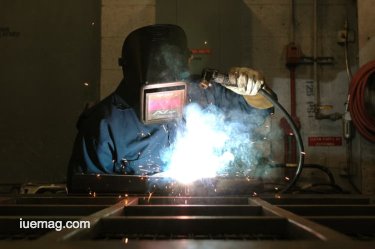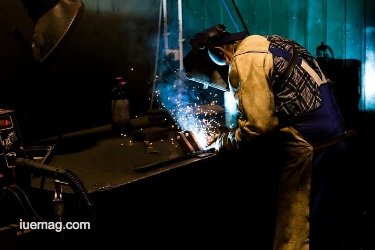

Mastering the Process: Plastic Welding Explained in 10 Simple Steps

When you browse for welding rods and other tools and accessories that you might need in order to carry out your plastic welding process successfully you might also what to get a greater understanding of how it all works.
Here is a guide to what plastic welding is all about and an overview of the various methods you can use.
A brief description
Before exploring the various methods of plastic welding that are currently available it makes sense to get a general understanding of what is involved and how the process works as you follow the various steps along the way.
In simple terms, the process of plastic welding is about creating a strong and reliable molecular bond between two thermoplastics that are suitably compatible.
There are three fundamental steps that need to be completed to achieve a successful welding process from start to finish.
The first step is the pressing process, followed by heating and then cooling the plastic. The range of different welding techniques is mainly distinguished by the alternative heating methods applied to each one.
High-frequency ultrasonic welding
A popular technique that is used across a number of industries is ultrasonic plastic welding.
This involves the joining or reforming of thermoplastics using a source of heat that is generated from a high-frequency mechanical motion described as ultrasonic welding.
 It works by translating the high-energy electrical energy that has been created into a mechanical motion which then goes on to create frictional heat with the assistance of applied force and form a molecular bond at the joint area.
It works by translating the high-energy electrical energy that has been created into a mechanical motion which then goes on to create frictional heat with the assistance of applied force and form a molecular bond at the joint area.Chemical compatibility is needed
In order to successfully bond these two thermoplastic components together, it is necessary to ensure that the materials you are using enjoy chemical compatibility.
What you will discover is that it is perfectly possible to melt two different materials together but if they are not compatible this will result in not achieving that all-important molecular bond that defines the welding process.
Melt temperatures
It is feasible that thermoplastics that do not share the same characteristics might prove to be compatible but the only way for this to happen is they share the same melt temperature range and a molecular structure that is not dissimilar.
A good guideline would be to remember that you should normally seek out similar polymers if you want to ensure that the welding process will be successful.
Joint design is important
Another fundamental aspect that you need to be mindful of is that joint design between the mating prices is pivotal in terms of accomplishing the required assembly outcome.
There are several key elements that are considered critical to successful joint design.
You should aim to create a uniform contact area combined with a small initial contact area and the ability to achieve perfect alignment is also essential when you are contemplating joint design options.
 Why ultrasonic is a good option
Why ultrasonic is a good optionThere are considered to be a number of plausible reasons why ultrasonic assembly is the way to go.
As well as being an efficient and speedy process it is a form of welding that expounds minimal energy and when you also consider that no adhesives, solvents or fasteners will need to be used either, it is clear that ultrasonic welding has a lot to offer.
This economical and reliable welding process is widely used in many different industries.
If you want precision
Laser welding is another option to consider and it is a process that is highly adaptable in terms of being used in either small-scale complex production runs or mass production high-volume manufacturing solutions.
The process involves the use of a laser beam that melts the plastic in the joint area by delivering the desired level of energy to a precise location.
What you will also discover with laser welding is that there is more scope for tolerance when it comes to resin chemistry and disparities in melt temperatures.
Vibration welding
Another option to consider is vibration welding, which describes the action of parts horizontally under pressure which has the effect of creating heat through surface friction.
An advantage of vibration welding is the fact that the electromagnetic heads used in the process help to cancel out the prospect of wear and lubrication normally associated with bearing surfaces.
Vibration welding is capable of joining all currently available thermoplastics and is capable of joining materials that are not the same but share compatible melting points.

Infrared welding for complex tasks
If you are looking for stronger welds and the ability to achieve a hermetic seal, plus the scope to weld more complex 2D and 3D designs it is likely that infrared welding might be the option you are looking for.
Infrared welding involves absorbing the radiation created within the thermoplastic material you are using and transforming it into heat, that melts the plastic and subsequently presses the components together.
A useful food production option
Last but not least, you might want to consider the option of ultrasonic food processing if you are involved in that industry and want to run a line order through without needing to stop for cleaning and maintenance of cutting blades.
It has been found that ultrasonic food processing could increase productivity and is easily incorporated into an existing production line setup, highlighting the versatility of plastic welding processes overall and the huge variety of different applications this process can be used for.
As you can see, there are a number of ways that plastic welding could enhance your business operation and even improve efficiency and productivity too.
A number of the methods described are acknowledged across a range of different industries as being a cost-effective and highly-efficient solution to a diverse set of manufacturing challenges.Now that you know a bit more about what plastic welding has to offer you will probably want to consider how you can use one of these processes to enhance your manufacturing capabilities.
Copyrights © 2025 Inspiration Unlimited - iU - Online Global Positivity Media
Any facts, figures or references stated here are made by the author & don't reflect the endorsement of iU at all times unless otherwise drafted by official staff at iU. A part [small/large] could be AI generated content at times and it's inevitable today. If you have a feedback particularly with regards to that, feel free to let us know. This article was first published here on 1st September 2019.
Overthinking? Uninspired? Brain Fogged?
Let's Reset That! Try iU's Positivity Chat NOW!

All chats are end-to-end encrypted by WhatsApp and won't be shared anywhere [won't be stored either].


